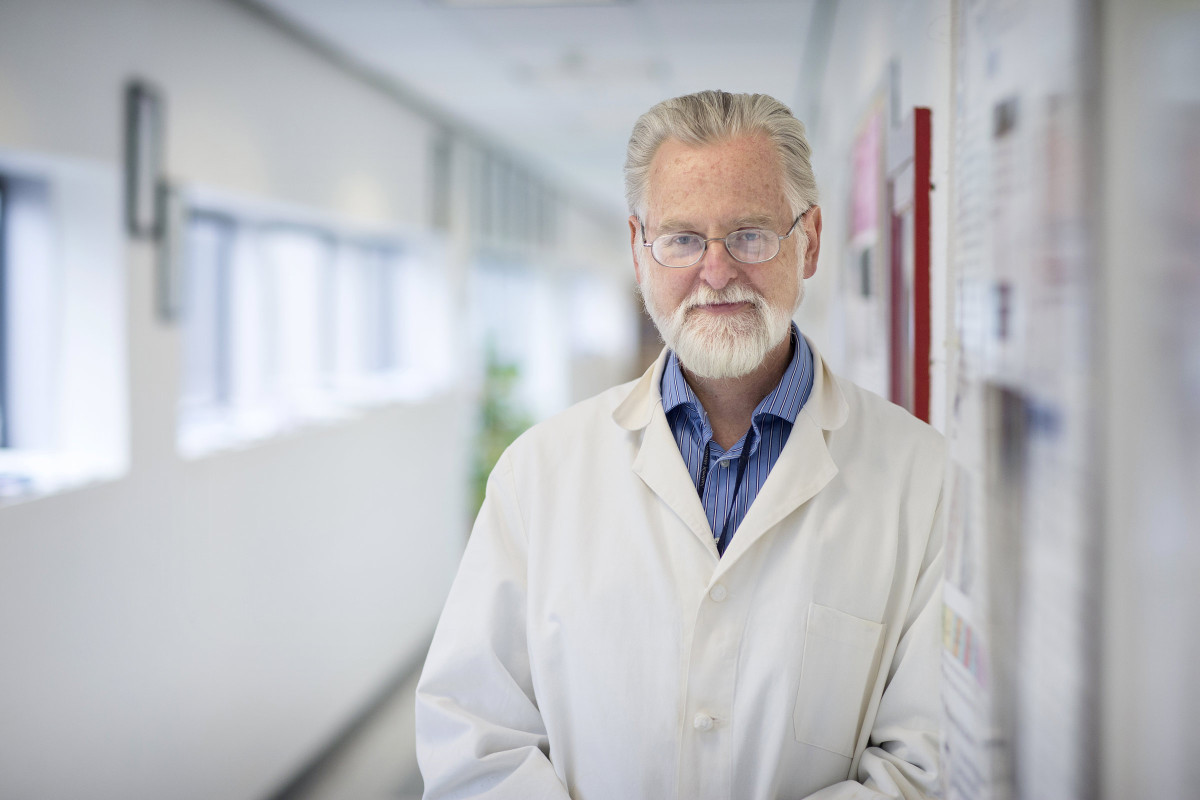Late Scientist's Work Could Yield New Cancer Treatments
May 6, 2024
The work of a late University of Virginia School of Medicine scientist has opened the door for life-saving new treatments for solid cancer tumors, including breast cancer, lung cancer and melanoma.
Prior to his unexpected death in 2016, John Herr collaborated with UVA Cancer Center’s Dr. Craig L. Slingluff Jr. to investigate a discovery made in Herr’s lab that could help treat cancer.
After eight years of further research, Herr’s investigations into the SAS1B protein could lead to “broad and profound” new treatments for multiple cancers, many of which are very difficult to treat, Slingluff reports in a new scientific paper in the Journal for ImmunoTherapy of Cancer. Herr is listed as a senior author on the paper.
“John was very excited about this protein SAS1B to be a valuable new target on human cancers, and I am delighted that our findings together further support his hope to make such a difference,” said Slingluff, a surgical oncologist and translational immunologist at UVA Health and the UVA School of Medicine. “The work we published included work done by Dr. Herr and his team over a period of years, as well as our subsequent work together; so, I am glad that the journal agreed with our request to include John as a senior author.”
Promising New Cancer Target
Herr’s lab was not originally focused on cancer; he was the head of UVA’s Center for Research in Contraceptive and Reproductive Health. In that role, he developed the first home fertility test for men, SpermCheck, which is available in pharmacies across the country. But his discoveries about the SAS1B protein found in developing eggs in women could pave the way for new cancer immunotherapies.
While found inside female reproductive cells called oocytes, SAS1B is also found on the surface of many different solid cancer cells, Slingluff’s new research verifies. Importantly, it did not appear on the surface of any other normal cells Slingluff’s laboratory tested. That suggests the possibility of antibody-based immunotherapy –a strength of UVA Health – to attack cancer cells while sparing healthy tissue.
“Selectively targeting SAS1B has the potential to have broad and profound impact on the treatment, and therefore reduction in mortality, of multiple malignancies,” Slingluff and his colleagues wrote in their new paper.
While more work needs to be done, the new findings are promising. If successful, the approach could be a big step forward in cancer care. Many solid-organ cancers are extremely difficult to treat, and patients often have few good treatment options, Slingluff notes.
“Immune therapy is revolutionizing treatment of human cancers,” Slingluff said. “But some cancers have been particularly resistant to immune therapy because of the lack of good targets on those cancers. We hope that this work that John Herr started will bring new hope to patients with those cancers.”
About the Research
Slingluff’s collaborators on the new paper include Arabinda Mandal, Jagathpala Shetty, Christine A. Tran, Walter C. Olson, Mriganka Mandal, Bhupal Ban, Eusebio S. Pires, Sara J. Adair and Todd W. Bauer.
UVA has filed patent applications on the use of SAS1B as a cancer drug and diagnostic target. Slingluff has received research support from Celldex, Glaxo-Smith Kline, Merck, 3M and Theraclion, and he receives licensing fees through the UVA Licensing and Ventures Group for patents for peptides used in cancer vaccines. A full list of the authors’ disclosures is included in the paper.
To keep up with the latest medical research news from UVA, subscribe to the Making of Medicine blog.
